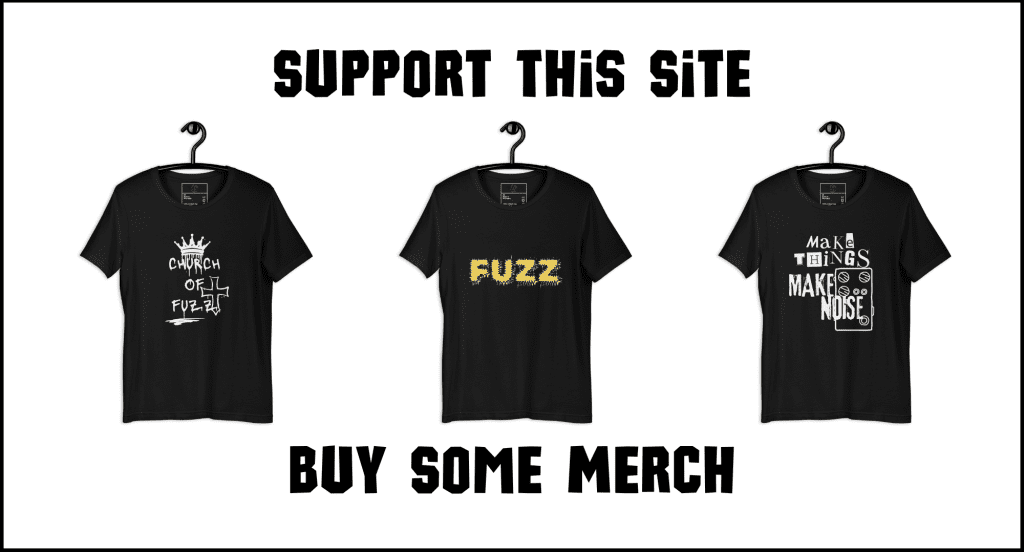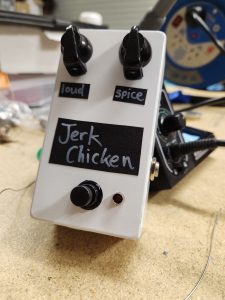 It didn’t occur to me to write this article, but I noticed that people were coming to this site asking “what do guitar pedals do” and ending up on my how do guitar pedals work article, which doesn’t really answer the question. So I decided to answer the question in order to help! All of this may be a bit out of the usual topics around how to build guitar pedals, but I figure if I can go into what guitar pedals do, it may get a few more people in guitar effects and those people may get into building. So I’m trying to get people onto the slippery slope that is this hobby.
It didn’t occur to me to write this article, but I noticed that people were coming to this site asking “what do guitar pedals do” and ending up on my how do guitar pedals work article, which doesn’t really answer the question. So I decided to answer the question in order to help! All of this may be a bit out of the usual topics around how to build guitar pedals, but I figure if I can go into what guitar pedals do, it may get a few more people in guitar effects and those people may get into building. So I’m trying to get people onto the slippery slope that is this hobby.
So what do guitar effects pedals do?
To put it succinctly, a guitar pedal changes the sound of a guitar.
When you pluck an electric guitar string, an electrical signal is sent through the guitar cable and into an amplifier and a sound comes out. By placing an effects pedal in the middle of that chain (i.e. running the guitar cable into the pedal then out of the pedal into the amp), that electrical signal is changed in some way. It may do something as simple as make the signal stronger so it comes out of the amp louder, it may distort the signal in some way making it sound fuzzy, it may alter the tone a bit to reduce/increase bass or treble, it may change the pitch of the sound, or it may do a combination of these things. The possibilities are pretty much endless.
To that end, guitar pedals generally fall into four broad categories. Some may argue that there are more categories, and I wouldn’t necessarily disagree with them, but this article from Roland did an OK job for classifying things and giving tons of examples for those interested, I’m going to stick with Roland’s four broad categories. With that, this article is obviously aimed at beginners who either don’t use guitar pedals (or maybe don’t even play guitar) or those looking to get into pedals for the first time. This can be a very deep rabbit hole to go down, so I’ll keep it simple.
Roland’s four main categories are:
- Dynamic guitar pedals: these change the volume of the the sound and can add distortion, overdrive, or fuzz as well as a bunch of other sounds that can generally be said to make the signal “dirty.” However, not all dynamic pedals are dirty. Clean boosts like the ZVEX Super Hard On exist and can be used to give a change of tone or a temporary volume boost when needing to cut through the mix for a solo.
- Time based guitar pedals: time based pedals, as the name would suggest, do something with time. Here we’re mostly talking about things like reverb and delay. Reverb is an echo effect where you can adjust how long the echo takes to come back (time) and how loud that echo is, as well as other stuff. Delay repeats a sound after a set amount of time.
- Frequency modulation guitar pedals: these change things like adjust the overall tone, may make the pitch higher or lower, or may double it to create an octave or chorus effect. There’s a lot that can be done here.
- Modelling guitar pedals: these pedals are designed to sound like specific amps or processors. They use computers to simulate a specific sound.
Of course, one pedal may do a few things, but people usually have more than a few pedals so it’s best to separate things. For example, I know there are fuzz reverbs out there and they sound cool, but it mostly overcomplicates things to force these things together. Instead, get one pedal that does fuzz and one pedal that does reverb. Then you can use them on their own or separately.
I’ve already said, but the types of sounds you can get out of effects pedals are pretty much endless. You can get everything light distortion all the way up to really gritty and dirty fuzzy sounds. You can make it sound like you’re playing in a large empty hall or a small room. There’s lots you can do.
Why Use Guitar Effects Pedals?
The short answer to this question is that musicians use pedals to shape the sound of their instrument to the way they want it and to suit the music they’re playing. While some genres like Jazz usually use a clean sound, heavier genres like Punk and most Metal use distortion.
Another part of the answer to this question is because you can. If something is there to enhance a sound, why not use it? You can’t produce that sound without a pedal, so use it and create something interesting.
The longer answer comes down to how amplifiers work and what they sound like.
An issue with older amplifiers, both for guitar and generally speaking, is that they would begin to distort if you turned them up too loud. This is the typical overdriven sound that you hear on a lot of Rock and Rhythm and Blues from the 1940’s and 1950’s. It’s mostly clean, but you can hear it just starting to break up. You can tell things are getting pushed a little too far. For this pushed to the extreme, listen to the guitar on Layla by Derek and the Dominos (Eric Clapton). This was famously recorded on a Fender Champ amplifier turned all the way up, pushed to its absolute limit until it got that tone and sound.
While this sound can still be created with new amplifiers, it was with the older amplifiers that they discovered that this overdriven tone sounded really cool. So naturally, people looked for ways to make similar sounds and pushed them further and further. Pedals also had the added advantage that you could get these sorts of sounds and tones without having to to your amp up to ear shattering levels either.
Another problem with amplification (in general) is that it can sometimes sound unnatural. Natural sound is imperfect, it’s not uniform. Natural areas also have some degree of echo as well. Pedals that give an echo effect, like reverb, round out the sound and make it appear more natural.
Then there are more subtle effects like compression. These are used to make a signal a bit more steady. It’s something that you may not be able to hear at first, but you’ll know it when it’s not there.
Can You Use A Guitar Pedal On Another Instrument?
Yes, yes you can. You may have noticed that throughout this article I’ve used the terms “guitar pedal” and “effects pedal” interchangeably. That’s because they are. Sure, pedals are mostly marketed towards guitarists, but there’s nothing stopping you from using them with another instrument.
A few words of advice though…
Firstly, since effects pedals are usually used with guitars, they’re usually designed for the signals and frequencies a guitar uses. It’s pretty unlikely that you’ll destroy an amp or a PA if you run a piano through a pedal, but the pedal may not be designed for the frequencies created by said piano. You won’t destroy the pedal either (probably), but it may not sound very good as you move further away from the notes that guitars can create. This is far from a general rule, as I imagine most pedals will sound OK with most instruments, but some pedals have static high and low pass filters built in that may not play well with other instruments.
With this in mind, although it’s more of a niche market, there are plenty of pedals out there designed for use with instruments other than guitars. Bass is usually the next most designed for, but I’ve seen pedals designed specifically for harmonica, for example.
But again, there’s nothing stopping you from using a “guitar” pedal with another instrument, even your own voice if that’s the sound you’re going for.
What Pedal Should I Start With?
If you’re thinking about getting into effects (for whatever instrument you play), what to start with will really depend on the sound you’re going for. Although this website is about building your own pedals, I would suggest, at least for the first few, that you go store bought. If you really get the bug, come back and check out some of my beginner friendly DIY pedal builds. If that’s jumping in too deep, check out my general beginner’s DIY guitar pedal guide on how to get started. If you’re super keen, you can also check out all of my guitar pedal stripboard layouts to find a project to suit your style.
But for your first pedals to buy, there are plenty to choose from. Again, it depends on the type of music you intend to make, but, at least in my opinion I’d recommend:
- Overdrive: overdrive can create anything from a little bit of heat in your tone to some smoother distorted sounds. It’s great for everything from early Rock and Roll, to Country, to Blues. However, if you’re looking to play Punk and Metal genres, you likely won’t get enough distortion. Starting with either a Boss Overdrive pedal or an Ibanez Tube Screamer is a good idea.
- Distortion: if your type of music leans heavier, then go with a distortion pedal over an overdrive pedal. These give a dirtier, more broken up sound. There are tons of distortion pedals out there, so I’d suggest going to your local music store and trying them out.
- Reverb: if you amplifier doesn’t have a built in reverb dial, I’d also suggest a reverb pedal for your setup. A lot of amps have reverb built in though, so you may not need one.
From there, that may be all you need. Or you may develop a serious habit. It’s up to you.
Related posts:
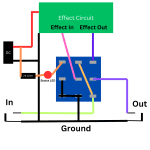 How To Wire A Guitar Pedal Foot Switch (3PDT)
How To Wire A Guitar Pedal Foot Switch (3PDT)
 Gear You Need To Make Guitar Pedals
Gear You Need To Make Guitar Pedals
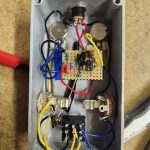 Big Guide To Debugging DIY Guitar Pedals
Big Guide To Debugging DIY Guitar Pedals
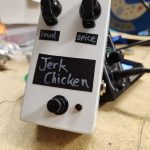 Why You Should Build Your Own Guitar Pedals
Why You Should Build Your Own Guitar Pedals
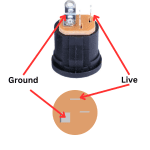 How To Wire A Guitar Pedal DC Power Jack
How To Wire A Guitar Pedal DC Power Jack
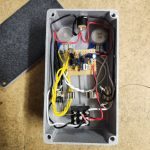 How To Wire Guitar Pedal Enclosures
How To Wire Guitar Pedal Enclosures
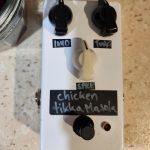 Is It Expensive To Make Your Own Guitar Pedals?
Is It Expensive To Make Your Own Guitar Pedals?
 How Do Guitar Pedal (And Guitar) Volume Knobs Work?
How Do Guitar Pedal (And Guitar) Volume Knobs Work?
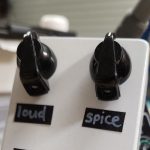 How Does A Drive, Gain, Or Distortion Knob Work?
How Does A Drive, Gain, Or Distortion Knob Work?
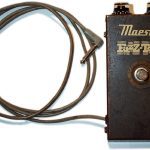 A Brief History Of Fuzz Pedals
A Brief History Of Fuzz Pedals
